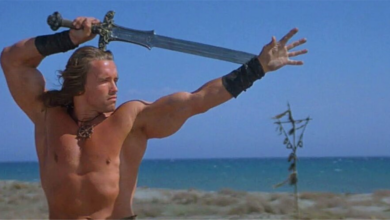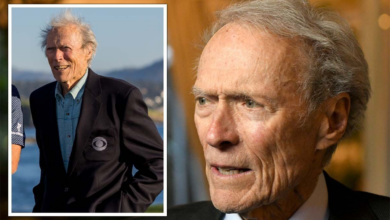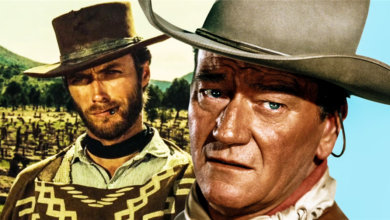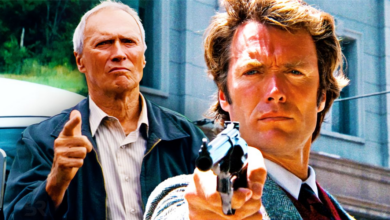‘Unforgiven’ 30 Years On: 13 Things That Make It the Best Clint Eastwood Movie
"It's a hell of a thing, killing a man..."
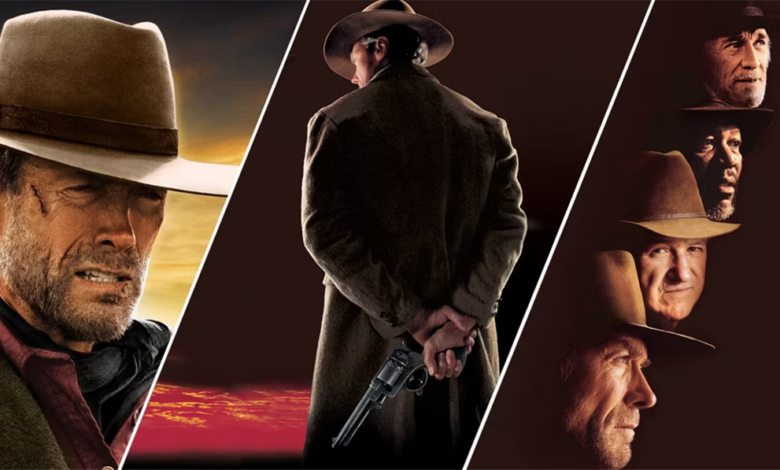
Clint Eastwood has directed many great movies throughout the decades. He made his start as an actor, known in the 1960s mostly for Western and war movies, but began to branch out into more roles by the 1970s. With that came a second career of sorts as a director, too. He’d often do double duty, directing and starring in many of his movies (something he’s continued to do as recently as 2021, with Cry Macho).
His biggest success as a director is likely Unforgiven, which was released way back in 1992. It’s one of the most critically successful movies of his career, and won four Academy Awards, including Best Picture. It’s a movie where Eastwood does his best work as both a director and actor, winning Best Director and being nominated for Best Lead Actor at the Oscars. To celebrate the film’s enduring legacy and 30th anniversary, here are 10 things that make Unforgiven such a great movie.
13, Its Deconstruction of the Western Genre

Unforgiven takes a fairly typical premise for a Western and does interesting and unexpected things with it. Essentially, there are a group of prostitutes in a small town who are outraged by the lack of punishment received by a man who brutally attacked one of them. They offer a bounty for the deaths of the attacker and his associate, which a once-ruthless ex-outlaw, William Munny, accepts as a final job.
It’s a film that unpacks justice, law, order, and violence in a manner far darker than most Westerns. It gets deep into the minds of its characters, depicts the heroes as heavily flawed and the villains as monstrous, and shows an unromanticized side of the Old West.
12, Gene Hackman’s Performance

The acting in Unforgiven is great across the board, especially from its four lead actors. Eastwood is subdued for much of the film, but becomes menacing and even frightening in the film’s final act. Morgan Freeman is great as Ned, the closest friend of Eastwood’s character, and Richard Harris also makes an impact in his brief but memorable role as English Bob.
It might end up being Gene Hackman‘s villainous turn as Little Bill that steals the show, though. He’s a tyrannical sheriff who shows no mercy or kindness in his role as the head of the small town where much of the film takes place, and he’s such a perfectly despicable antagonist. Hackman creates a character of pure evil without ever making Little Bill feel like a cartoon character, or too far over the top, making for one of the very best Western villains of all time.
11, The fantastic cinematography

Unforgiven is a fantastic-looking movie thanks to brilliant cinematography, from its first shot to its last (coincidentally, the opening image mirrors the final one). Westerns are almost inevitably going to have spectacular scenery, thanks to their desert and rural settings, but Unforgiven goes one step further than most in looking truly spectacular.
There’s a rich use of color throughout, and excellently captured scenes that take place at all times of the day and night. The range of visuals ensures the film is always a treat to look at, and the use of dark lighting and shadows during the film’s darker scenes – figuratively and literally – adds to the film’s tense, riveting atmosphere.
10, The Morality

When you think of standard Westerns – especially those from Hollywood in the 1940s and 1950s – you’ll probably think of clear-cut, good vs. evil storylines. In many old-school Westerns, the lawmen and sheriffs are the good guys, and even if the cowboys operate slightly outside the law, they’re often in the right. Consequently, the villains are often unambiguously evil, and serve as foes that the good guys can shoot down without feeling guilty.
Unforgiven isn’t interested in taking such a simple approach. After all, this is a movie where the evilest character ends up being the sheriff who commits more acts of violence than the criminal whose vicious attack kick-starts the plot. Similarly, the film makes it clear that Eastwood’s character has also done monstrous things in his past, and he’s come to terms with the terrible idea that he can never completely redeem himself, or be fully forgiven for the misdeeds he’s done.
9, The Supporting Characters

Unforgiven is a period-set film where just about every character who gets dialogue is memorable, with numerous interesting characters introduced and given character arcs in a movie that’s only a little longer than two hours.
The aforementioned English Bob is only in a handful of scenes, but makes a tremendous impression, and is essential to the film’s narrative and themes. Further memorable characters include The Schofield Kid, who joins Ned and William Munny, the constantly nervous writer who accompanies English Bob, W.W. Beauchamp, and the prostitutes whose desire for revenge kicks off the plot. The latter are given more agency and screen time than female characters generally got in most older Westerns, and it makes the film all the more powerful and impactful as a result.
8, The Pacing

Slow doesn’t always equal boring, when it comes to pacing, and Unforgiven proves just that. It’s a film that takes its time with its main narrative, and isn’t afraid to have numerous scenes that emphasize character development over explicitly moving the plot forward.
It does this without ever feeling boring. It may take its time in reaching its unforgettable conclusion, but it always feels like it’s going somewhere, and it’s a deep and engaging film that rewards your patience. It sets up everything perfectly, and brings all the pieces together seamlessly by the end, making it a fantastically written and edited movie.
7, Its Honesty About the Brutality of the West

The Western genre may sometimes offer escapist entertainment, but that’s certainly not something Unforgiven
It’s hard to say whether Unforgiven is completely realistic in its depiction of the Old West, but it feels a great deal more real than other American Westerns. People get sick, characters can’t shrug off beatings or other injuries, and sometimes, dying a violent death takes an agonizing amount of time. It’s a gritty, brutal West, and it makes you question whether there would have been anything fun or adventurous about living back then.
6, Its Suspenseful Sequences

While Unforgiven might not be a thriller, it is a very suspenseful movie. Its narrative is unpredictable and takes quite a few surprising turns, and owing to the danger of the world, the emphasis on realism, and the ruthlessness of its antagonist, it’s a film where no one ever feels safe from death.
This makes it a very nerve-racking Western, best seen in its climax, scenes of violence, and in just about any scene that features Gene Hackman. A scene that takes place in and around the town’s jail at the halfway point is particularly stomach-churning, and is the best demonstration of how fearless and manipulative Little Bill is, as a villain.
5, Its critique of violence

Unforgiven does not take pleasure in depicting violence on-screen. It’s a film that’s explicit about the toll of firing a gun at another human being. Characters discuss the nature of violence and killing at several points, Munny is haunted by the violence he’s done, and The Schofield Kid ends up being traumatized by his participation in an act of violent retribution.
Westerns are typically filled with violence, and much of the time, it’s entertaining or even mindless. Gunfights are clean and feature little blood, and people usually die instantly. Unforgiven is the opposite, when it comes to these things. Gunfights are bloody, causing death is traumatic, and dying doesn’t always happen quickly, which leads to some intense death scenes in the movie.
4, It Contains Clint Eastwood’s Best Performance

Clint Eastwood does often play a similar character throughout most of his movies. He’s well-regarded for his ability to play tough, no-nonsense, and powerful anti-heroes, and he’s amazingly skilled at making these characters charismatic and easy to root for, even if they do violent or questionable things.
He taps into his unique skills for his performance in Unforgiven, but the contemplative nature of the story and its focus on characters allows him to dig a little deeper than usual. What emerges is a fantastic lead performance that never tries to steal the spotlight from some of the more explosive side characters, yet is remarkably captivating in its own way. It’s one of the handful of performances that one could point an Eastwood non-believer towards, to convince them that he has genuine range as an actor.
3, It’s an Unofficial Send-Off to Eastwood’s Iconic Western Characters

William Munny isn’t confirmed to be a specific character that Eastwood has played before, but it’s possible to think of him in that way. Playing the protagonist of Unforgiven gives Eastwood a chance to explore how life might have been for one of his past iconic characters (like the Man With No Name from The Good, the Bad and the Ugly) if they’d gotten older, more jaded, and become tortured by their past.
Again, it can’t be suggested that Unforgiven is a sequel to that Sergio Leone trilogy, or any other Western that starred Clint Eastwood. But it is an unofficial conclusion of sorts for the iconic type of character that Eastwood played, and one final chance for him to give that sort of old-school, no-nonsense Western anti-hero a bittersweet and fitting farewell.
2, The Stripped-back, Simple Score

The score of Unforgiven is a little more mellow than what one might expect from a Western. It certainly doesn’t have the bombast or theatricality of an Ennio Morricone score, with his music for the previously mentioned Sergio Leone/Clint Eastwood trilogy being one of the main reasons why those films are so beloved and iconic.
Yet Unforgiven still has a memorable score that perfectly complements the film and its darker, more introspective nature. Frequent Eastwood collaborator Lennie Niehaus was credited with writing much of the music, but Eastwood himself – who’s known for sometimes composing music for his own movies – wrote the main theme, the haunting and simple “Claudia’s Theme.”
1, Its Dramatic Finale

Things inevitably end in a showdown in Unforgiven. It’s unlike a climactic shootout in most Westerns, though. It’s dimly lit and far more tense and unnerving than you might expect, and it’s one where you really don’t know who’ll survive, or if anyone even will.
This stands in contrast to a typical good vs. evil Western, where you can rely on the good guy winning and the bad guy getting shot or ending up in jail. It makes the climax to Unforgiven extra powerful, ending the film on a high note that helps it endure as one of the best Westerns of all time.

